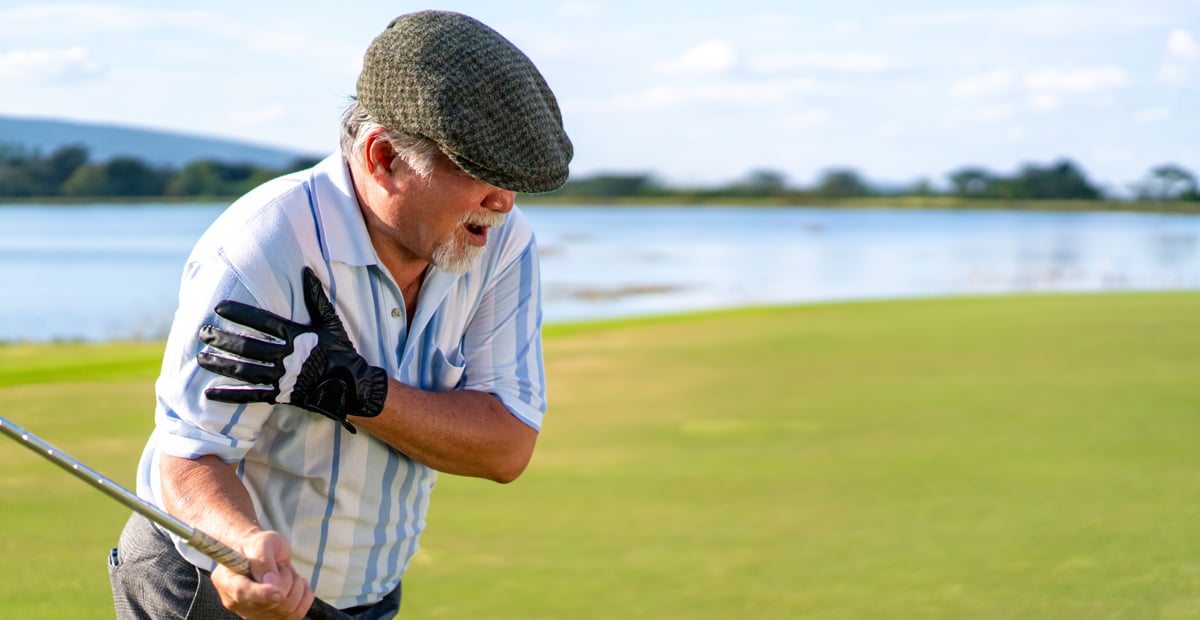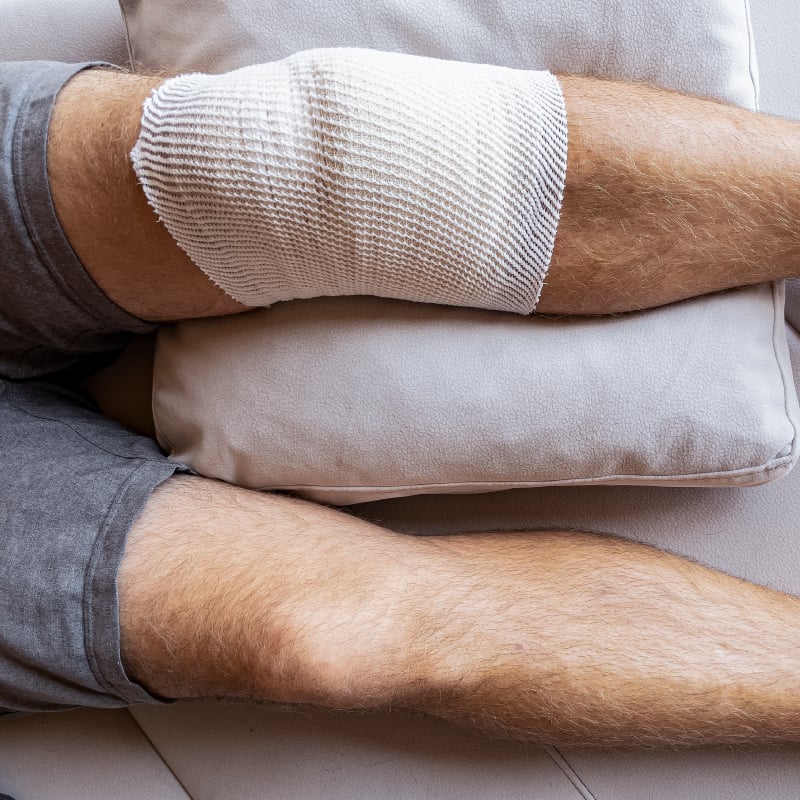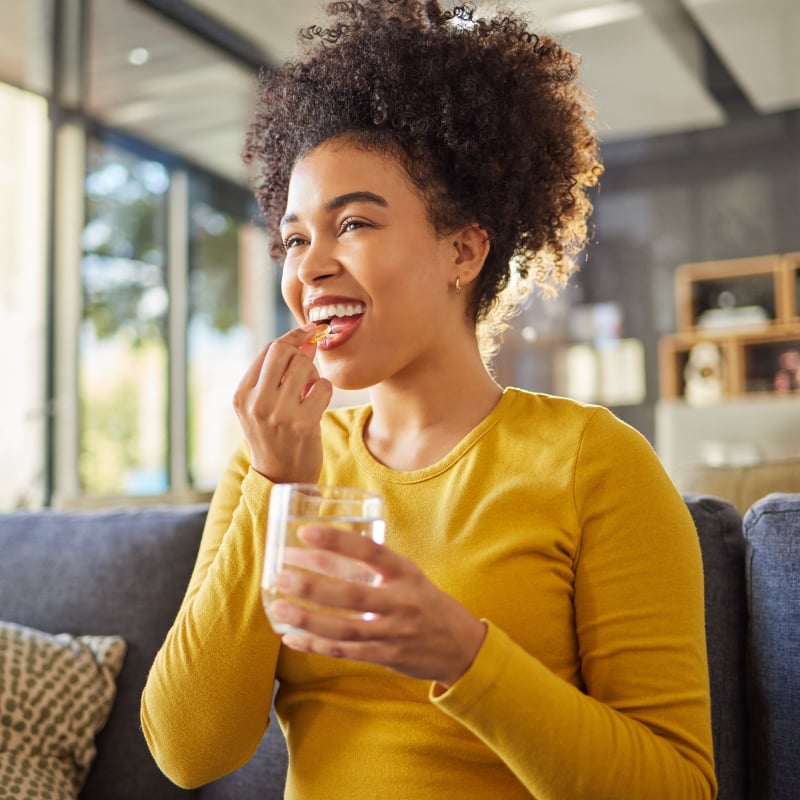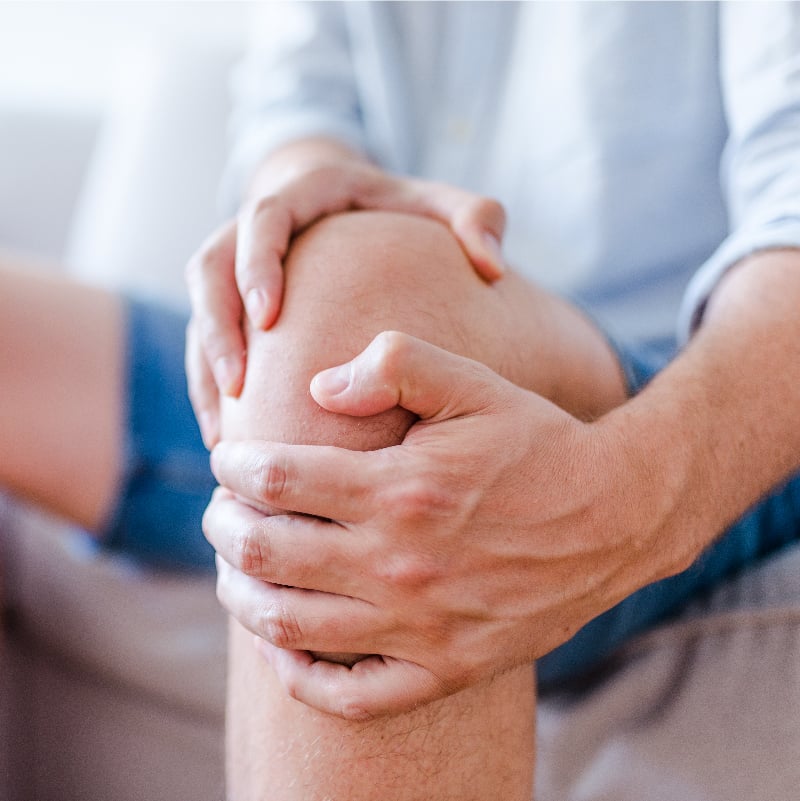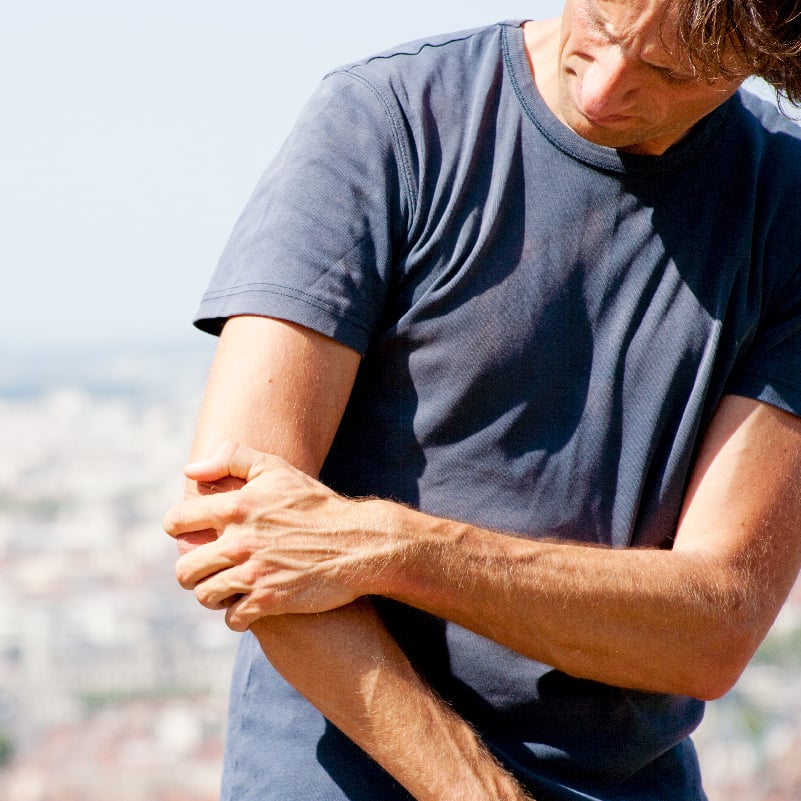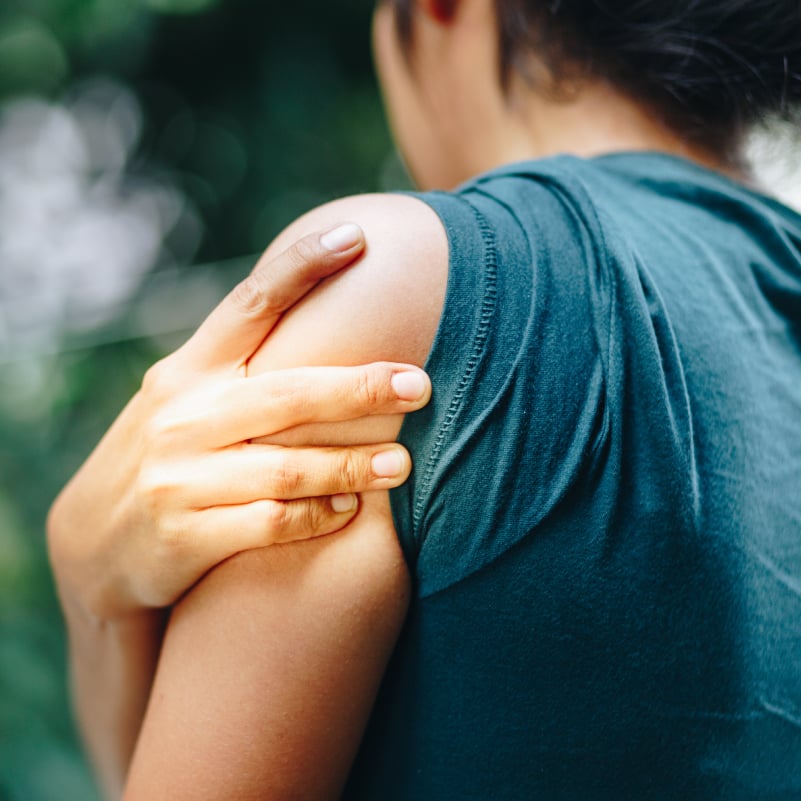Even though golf is a non-contact sport, there are still plenty of injuries that occur out on the course. Scott Biehl, DO, walks through some of the most common ones, how to treat them, and offers advice on preventing them.
No matter when or where, being out on a golf course is a fun and refreshing experience for millions of people around the world.
Like any other sport, people who continuously play may develop an injury that leads to them seeking medical attention.
Scott Biehl, DO, is a sports medicine and interventional orthopedist with Rochester Regional Health. He describes some of the most common golf-related injuries, how they are diagnosed and treated, and the best methods of prevention.
Golfer’s elbow (medial epicondylitis)
Fittingly, one of the most common injuries features ‘golf’ in its name. People with golfer’s elbow suffer from inflammation around the flexor tendons on the inner part of the elbow. These tendons stretch more frequently with repetitive wrist movements, which can cause irritation or inflammation over time.
Treatment
After diagnosing golfer’s elbow, a provider might prescribe a few different treatments. Initially, using non-steroidal anti-inflammatory drugs (NSAIDs) for a few weeks would be suggested. Wearing a brace called a counterforce strap to lessen strain and inflammation of the tendon, steroid injection (commonly known as a cortisone injection) under ultrasound guidance, and physical therapy (at home or in an office setting) are all available options, as well.
“If a physical therapist features ‘TPI’ as part of their credentialing, they are certified to treat golf-related injuries through the Titleist Performance Institute (TPI),” Dr. Biehl said.
If these treatments don’t result in improvement, a provider might suggest an MRI to determine if a tendon has torn. A confirmed tear can be treated by a couple options that may be paired together. One option is TenJet – a minimally invasive tenotomy procedure that uses ultrasound to guide a special instrument to the damaged part of the tendon and clean up the injured fibers. This can be paired with platelet-rich plasma (PRP) therapy, which involves taking platelets from a person’s blood and putting them back into their own body to help them regenerate damaged tissue more effectively.
Tennis elbow (lateral epicondylitis)
Similar to golfer’s elbow, tennis elbow deals with inflammation around the extensor tendons on the elbow – but on the outside instead of the inside.
Golfers will feel this along the outer area of the elbow while extending their arms during their golf swing.
Treatment
The treatment options for tennis elbow are the same as golfer’s elbow: NSAIDs for a few weeks, wearing a brace, physical therapy, and/or a steroid injection.
If the injury is not healing, a provider will recommend an MRI. Combining the TenJet procedure with PRP therapy can be helpful in restoring a person’s elbow function if the injury is serious.
Wrist sprain
If a golfer follows through on their swing but slams the head of the club into the ground early, it might result in a wrist sprain.
The wrist has many ligaments that can become sprained, so the opportunity for an injury is higher. Golfers will notice pain that lasts for a few days after the injury when they attempt to flex or extend the wrist or move the ligament in specific ways.
Treatment
Providers will likely prescribe anti-inflammatory medication for a short period and resting the wrist. Depending on the sprained area, golfers can use a brace for 2-3 weeks to let the ligaments rest and heal. Physical therapy can also be beneficial.
After the above interventions, if symptoms still linger 2-3 weeks later, contact a provider to determine if further evaluation or treatment is needed. An X-ray or MRI may be recommended to determine if any significant damage has been done to the wrist and whether a steroid injection might be right.
To avoid injury, players should focus on the mechanics of their swing by trying to just barely skim the top of the grass with the bottom of their club, instead of coming down and on top of the ball.
Shoulder impingement syndrome
Players tend to feel shoulder impingement syndrome as pain over the outer part of the shoulder near the deltoid. Patients with this injury tend to grab the side of their upper arm when explaining where they feel pain.
The injury stems from the repetitive overhead motion of the arm and shoulder which aggravates the tissue sitting on top of the rotator cuff but below the outer ‘shelf’ of the shoulder. Bursa tissue, which is a tiny fluid-filled sac that cushions tissues and reduces friction between hard and soft surfaces such as bone and tendon, is getting pinched over and over again.
“This is similar to when a large truck is going under an overpass bridge and, instead of barely clearing the bridge, it clips the bottom of the overpass,” Dr. Biehl said.
Treatment
Providers tend to prescribe anti-inflammatory medication and rest to offset these injuries. Physical therapy can be beneficial in helping the upper back and small stabilizing muscles of the shoulder improve the shoulder’s mechanical movements. As needed, steroid injections can be given to patients who need them.
Rotator cuff injury
With a rotator cuff injury, the group of muscles and tendons that connect the upper arm to the shoulder blade may become inflamed or tear due to overuse from repeated rotation from a golf swing.
The rotator cuff stabilizes a person’s shoulder and allows for the joint to move smoothly, so movements like raising an arm over the head or rotating the arm in front and behind the back become painful. Sometimes the pain becomes worse at night.
Treatment
Interventional orthopaedic specialists can use therapies such as TenJet and/or regenerative techniques like PRP, bone marrow concentrate or lipoaspirate to treat for a partial tear in the rotator cuff if using treatments such as anti-inflammatory medication or physical therapy don’t work well. Often these tend to push the injury in the right direction toward healing and can potentially help avoid surgery.
Prior to considering these options, an MRI will be recommended to help analyze the extent of the injury. In some cases, the injury may be too severe and warrant a surgical consultation with an orthopedic sports medicine surgeon.
Partial meniscus tear
More often seen in patients in their 40s-70s, a partial meniscus tear tends to occur in patients who have had a partial tear already. It is not uncommon for someone to have a partial tear without any symptoms – people live with these all the time and don’t know it. It is not until a partial tear gets torn a bit more that they realize they have a tear due to the inflammatory response.
The meniscus is cartilage that helps to stabilize the knee joint. When a person feels pain, tenderness, or swelling along that joint line, observing buckling, locking up, or instability can confirm a meniscus tear. Providers can gently press along the sides of the knee and look in the area where it dips to confirm this injury.
Treatment
Patients are usually prescribed oral anti-inflammatories and encouraged to wear a brace or compression sleeve to help with stability in the short term. Physical therapy works to decrease swelling and improve mechanics, as well as building hip and core strength to align and strengthen the knee and leg as a whole.
Some patients choose a steroid injection, which provides relief for several weeks. However, if there is a larger meniscus tear, an MRI will be performed so a surgeon can perform a meniscectomy, which involves trimming out the area of the meniscus that is causing pain.
Back pain
While experiencing back pain happens in general outside of golf, players might experience it while twisting or turning the hips to face the target squarely toward the end of the stroke.
The torsional force on the lower back muscles can cause some pain, which might include:
- muscle strains
- spasms or tightness
- disc herniation
- lower lumbar spine injury (often accompanied by the phrase “I threw out my back”)
Treatment
In these circumstances, providers might prescribe a short-term anti-inflammatory medication or an oral steroid such as prednisone or a Medrol Dosepak.
Heat and rest are very helpful in restoring back muscles to their natural state; physical therapy can loosen up muscles and improve the strength and function of a person’s core, including their abdominal, low back paraspinal muscles and gluteus muscles that help to support the lower spine and prevent injuries from returning.
“If these treatments and therapies go on for several weeks and do not relieve the symptoms, providers might suggest more advanced imaging such as MRI to determine the next best course of action,” Dr. Biehl said.
General injury prevention
Golfers – beginners and experts alike – can take measures to reduce their risk of injury.
Adequate warm-up: Practice, practice, practice. Whether a golfer is playing 9 holes or 18 holes, doing some dynamic warm-up stretches will ensure the muscles being used are primed to be active and less likely to be injured.
Start small: Working from lighter-weighted clubs to heavier ones will help the body to adjust. Start by swinging higher lofted clubs like wedges and gradually work down to heavier-weighted clubs (moving from a 7-iron to a 5-iron to a driver.
Increase thresholds: On an 18-hole course, golfers are going to be hitting at least 100 shots, especially if they are on the range beforehand. Without any strength training or practice beforehand, injuries will be more likely to happen.
“Many overuse injuries stem from a person taking the same shot repeatedly,” Dr. Biehl said. “If a person is playing golf frequently every week, it can be good to build up a tolerance to those movements. Part of this is ensuring a foundation of consistent strength and good form.”

